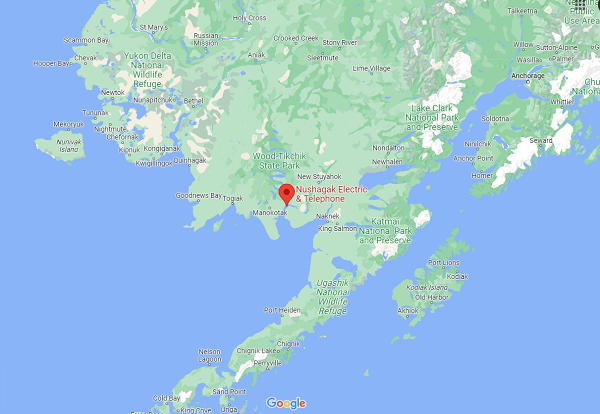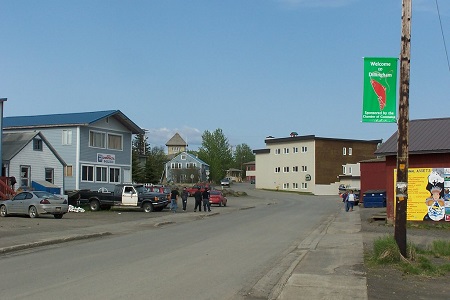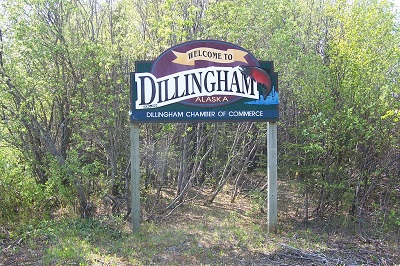
Fast, affordable Internet access for all.

Data unsurprisingly ranks remote Alaska dead last when it comes to the availability of affordable broadband. That’s particularly true in areas like Bristol Bay, an area the FCC’s updated broadband maps suggests lacks access almost entirely. But as with most underserved regions, local cooperatives are at the forefront of efforts to finally address the problem.
Launched in 1975, the member-owned Nushagak Electric & Telephone Cooperative, based in Dillingham, Alaska, offers locals broadband access through microwave towers; often the only way to provide service across Alaska’s rugged landscape. But the co-op, which also offers a electric, telephone, and cable TV service, says it’s on the cusp of new fiber deployments that should finally bring next-generation speeds to a chunk of the co-op’s members.
The co-op has been working since 2021 on a $22.4 million plan to expand more reliable fiber to the region. The project is partially funded by the USDA ReConnect program as well as $6.5 million in term loan money from the National Rural Utilities Cooperative Finance Corporation. The cooperative will also use $784,000 of its own money to get the project underway.

Nushagak was one of 18 utilities whose broadband expansion efforts are being funded by the USDA. The network is expected to bring fiber to 944 households, 2,604 people, nine educational facilities, eight essential community facilities, three health care facilities and 223 businesses in a rural community spread out over 49 square rural miles.
According to a presentation made by the co-op, it plans to deploy largely underground fiber runs from its microwave antenna site in Levelock to Ekwok, then Aleknagik and Dillingham. The fiber lines will support a number of additional technologies, including both wireless and coaxial cable customers in Dillingham and Aleknagik.
Originally, the co-op had hoped to complete the 100 mile new underground fiber run from Levelock to Dillingham by this past April. But applying for BEAD (Broadband Equity Access And Deployment) grants have shifted the timeline, and the co-op now says it’s planning to finish laying the new fiber run by the fall of 2024.
“Our physical separation really shines a light on the need for that durable broadband connection,” Nushagak CEO Will Chaney tells Alaska Public Radio. “And fiber is something that the cooperative recognizes is the gold standard for broadband delivery.”

Nushagak currently provides broadband access to subscribers courtesy of a microwave tower linked to an existing fiber network in Levelock. Microwave connectivity has traditionally meant higher costs, slower speeds, and usage caps for local subscribers.
Many subscribers paid anywhere from $48 to $165 a month for broadband speeds well below the FCC’s base definition of broadband (25 megabit per second down, 3 Mbps up). Due to microwave constraints, most existing tiers feature usage caps, though the cooperative recently announced that ongoing network upgrades had allowed it to remove a 400 gigabyte monthly usage cap from the company’s most expensive, $180 a month tier.
“Taking the cap off and giving everyone unlimited (data) impacts how things perform,” Nushagak’s operations manager Dennis Payne told the Bristol Bay Times. “There’s a balancing act that we have to weigh because we’ve got a limited backhaul with that microwave system.”

Competition is hard to come by across most of Bristol Bay, though Space X’s Starlink has provided locals with slightly more reasonable options (assuming they have line of sight and can afford the service’s $600 hardware charge). The cooperative’s ongoing fiber upgrades should dramatically change the game for those in its service area that have long clamored for better, more affordable options.
The broadband infrastructure being built in the Bristol Bay area is only the tip of the iceberg. Other parts of the nation’s largest state are in line for significant federal grant dollars courtesy of the NTIA's Tribal Broadband Connectivity Program, the USDA's ReConnect program, and more than a billion dollars in additional grants Alaska is poised to soon receive from the BEAD program, itself made possible by the Infrastructure Investment and Jobs Act (IIJA).
As with the early days of rural electrification, cooperatives continue to lead the charge across much of neglected rural America when it comes to better, faster, cheaper broadband options.
Inline of image of downtown Dillingham courtesy of Flickr user J. Stephen Conn, Attribution-NonCommercial 2.0 Generic (CC BY-NC 2.0)
Inline of Dillingham Welcome sign courtesy of Flickr user J. Stephen Conn, Attribution-NonCommercial 2.0 Generic (CC BY-NC 2.0)
